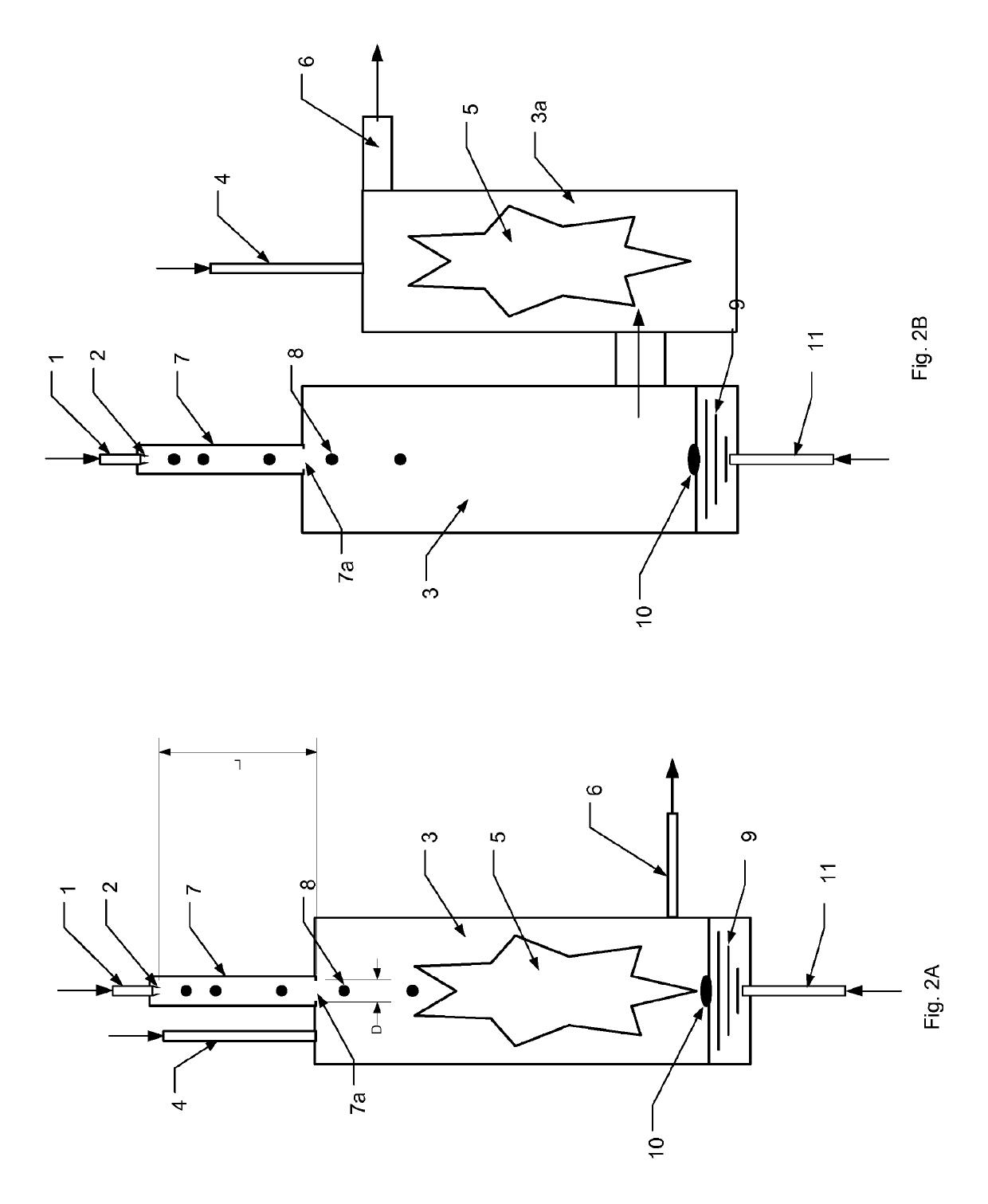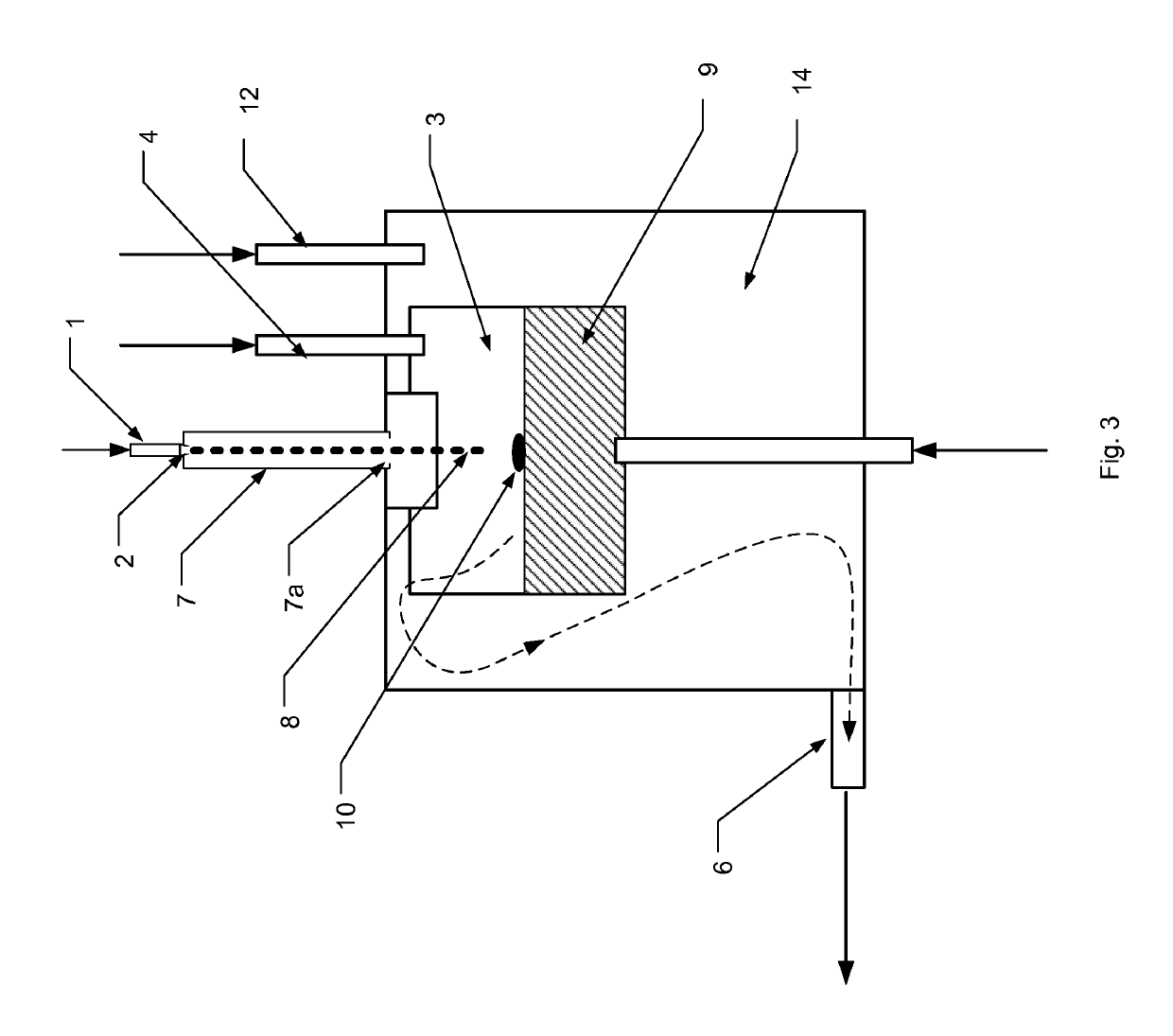Method and apparatus for conversion of liquid fuels in a reactor, use of an apparatus for conversion of liquid fuels
a technology of liquid fuel and apparatus, which is applied in the direction of gasification process details, combustion process, inorganic chemistry, etc., can solve the problems of inability to prevent radiation and its effects, large probability of fouling or coking, and inability to atomize, etc., to achieve reliable and efficient process, reduce or even prevent the build-up of solid residues, and reduce the effect of solid residues
- Summary
- Abstract
- Description
- Claims
- Application Information
AI Technical Summary
Benefits of technology
Problems solved by technology
Method used
Image
Examples
Embodiment Construction
[0036]FIG. 1 illustrates a method and device as per the prior art. Via a liquid fuel line 1 which ends in a spray nozzle 2, fouling or coking liquid fuel is atomized inside chamber 3. Line 4 feeds a gaseous reactant into chamber 3. Inside chamber 3 a reaction takes place, for instance a flame 5 is created. Exhaust products leave chamber 3 via an exhaust 6.
[0037]In prior art devices a solid deposited matter frequently occurs at the nozzle tip. This results in clogging of the nozzle 2 and hence disruption of the supply of the fouling or coking liquid fuel in chamber 3, reducing the efficiency of the process and, after time, the need for removing the solid residue which often means down time for the reactor and thus a further reduced efficiency.
[0038]FIG. 2A illustrates a method and device according to the invention. The nozzle 2 is positioned remote from the reaction zone 5 at a spot with reduced radiation due to a small view factor of chamber 3. Preferably the nozzle is positioned in...
PUM
| Property | Measurement | Unit |
|---|---|---|
| solid angle | aaaaa | aaaaa |
| solid angle | aaaaa | aaaaa |
| angle | aaaaa | aaaaa |
Abstract
Description
Claims
Application Information
 Login to View More
Login to View More - R&D
- Intellectual Property
- Life Sciences
- Materials
- Tech Scout
- Unparalleled Data Quality
- Higher Quality Content
- 60% Fewer Hallucinations
Browse by: Latest US Patents, China's latest patents, Technical Efficacy Thesaurus, Application Domain, Technology Topic, Popular Technical Reports.
© 2025 PatSnap. All rights reserved.Legal|Privacy policy|Modern Slavery Act Transparency Statement|Sitemap|About US| Contact US: help@patsnap.com



